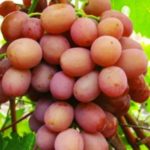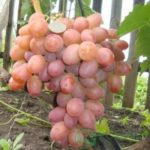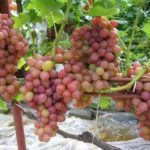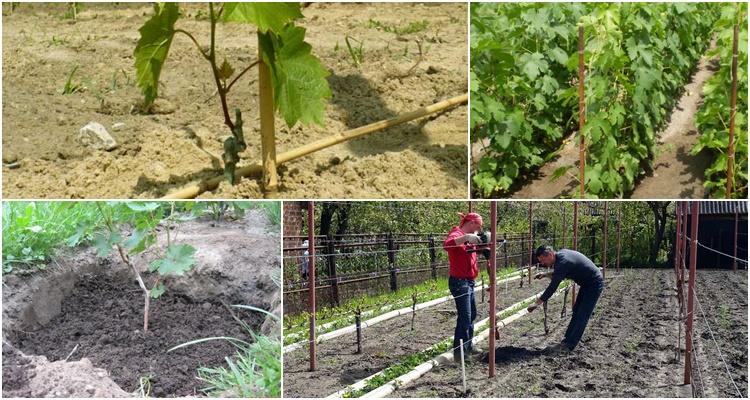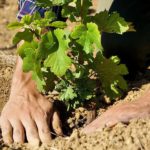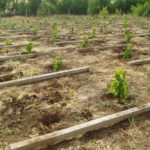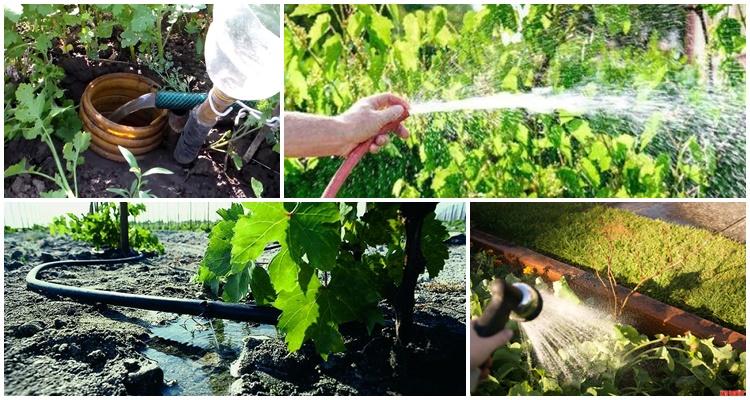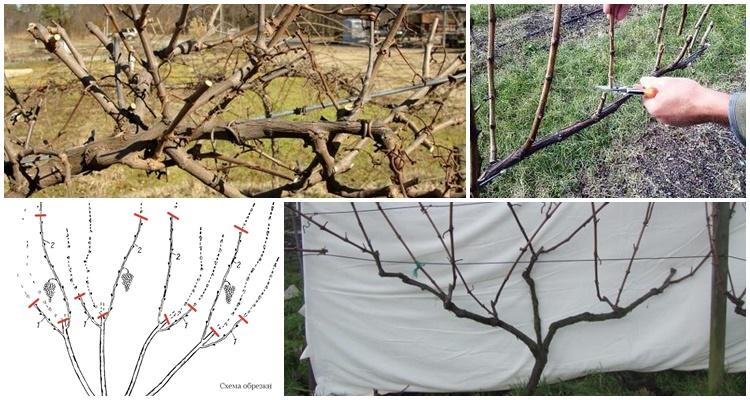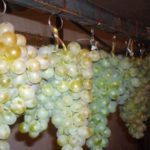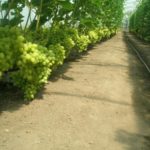Gardeners planning to grow grapes on their plots are looking for a variety that will withstand the climate of the region, will be resistant to fungal diseases and, with minimal care, will delight you with a rich harvest. In recent years, summer residents have given preference to hybrid varieties that demonstrate more positive characteristics than old varieties. The Chameleon grape has high frost resistance and strong immunity to disease.
- History of the variety's creation
- Description and characteristics of Chameleon grapes
- Advantages and disadvantages
- Subtleties of growing crops
- Where to plant on the site
- How to plant seedlings
- Necessary care
- Watering
- Fertilizer application
- Trimming
- Shelter for the winter
- Diseases and pests of the variety
- Cleaning and storage
History of the variety's creation
A hybrid form of the grape called Chameleon was developed in 2010. Its creator is considered not to be a professional breeder, but a folk craftsman from Ukraine N.P. Vishnevetsky. To breed a new plant with improved characteristics, he used grape varieties such as Atlant Zaporozhye, Arcadia, Glusha and Kishmish radiant. The hybrid took the best qualities from each parent form and began to spread throughout the gardens of domestic summer residents in 2011.
Description and characteristics of Chameleon grapes
The hybrid form Chameleon received its name for its ability to change the color of the berries depending on the place of cultivation. The plant belongs to the very early specimens and produces the first harvest 110 days after the buds swell. This feature allows it to be grown not only by residents of the southern regions, but also of the northern regions, where cold weather sets in early.
Chameleon Characteristics:
- The leaves are dark green in color, three-lobed with smoothed edges. Less common are five-lobed leaf platinums.
- The bush is vigorous and produces many shoots. The harvest for the season, in good weather, is taken the first time from the main branches, and the second time from the stepchildren.
- Resistance to cold is high, without shelter it can withstand temperatures down to -23 degrees.
- The berries have a regular conical shape and a light burgundy color with a slight orange tint.
- The percentage of fruit sugar content is 18.
- The weight of one berry is about 15 grams.
- The fruit pulp is slightly crunchy, juicy and quite sweet.
- The weight of one bunch with proper care reaches 2 kg.
- Productivity from one bush is from 20 to 30 kg.
- The hybrid has good immunity to fungal diseases.
Advantages and disadvantages
Growing a new hybrid form on their plots, gardeners noted the positive and negative qualities of the grapes.
Subtleties of growing crops
Before you start planting Chameleon grape seedlings, you need to select and prepare a site. The plant is unpretentious to growing conditions, but the minimum requirements must still be met.
Where to plant on the site
To plant the crop, it is recommended to choose a place on a slight hill so that water does not stagnate near the roots during the rainy season. Seedlings are preferably placed on the south side of the site, giving preference to places protected from drafts and cold winds. The soil must have a neutral reaction, light and fertile.
The area is first dug up to a depth of 50-60 cm and at the same time the roots of weeds are removed. If not done right away, they will rob the grapes of nutrients. If the soil is not nutritious enough, add fertilizers.
How to plant seedlings
They buy seedlings from nurseries - so there is confidence that they purchased exactly the variety that they planned. In addition, the risk of purchasing planting material infected with a fungal disease is reduced.
Planting a Chameleon is carried out using the following instructions:
- Within a few days, holes are dug at a distance of 2.5-3 meters from each other. The size of the planting holes is 100x100 cm.
- A day before work, the roots of the grapes are soaked in water. It is recommended to add a growth stimulant to it to speed up the rooting of the crop.
- A drainage layer is placed at the bottom of the hole. To do this, use either crushed bricks or small pebbles.
- The soil is mixed with nutrients, and half is poured into the hole.
- Install the seedling and straighten its roots.
- Next, add the remaining soil and irrigate the grapes.
Important! It is necessary to ensure that the root collar of the plant is above the surface of the ground.
Necessary care
Without minimal agrotechnical care, the harvest will be small, so the seedlings are regularly moistened, fertilized, sanitary pruned and insulated for the winter if necessary.
Watering
It is necessary to irrigate grape seedlings in the first years of cultivation; subsequently, natural precipitation will be sufficient for the plant. Moistening is not carried out with cold water; up to 20 liters of water are spent on each bush, depending on the condition of the soil.
Fertilizer application
The first year after planting the grapes, the nutrients stored in the hole are sufficient for it. Subsequently, both organic and mineral fertilizers are used for feeding. In the spring, it is recommended to apply compounds with nitrogen, and during the period of berry formation - fertilizers containing potassium and phosphorus.
Trimming
The total load on the plant bush should not exceed 35 buds, since the clusters are large and the crop may break.In spring, diseased and weak shoots are removed.
Shelter for the winter
If the temperature in the growing region does not fall below 23 degrees in winter, additional insulation is not required. Otherwise, cover the grapes with plastic wrap or sprinkle them with earth, after tying the shoots and bending them to the soil.
Diseases and pests of the variety
The hybrid form has a high immunity to fungal pathologies, but in rainy summers the vine can be affected by mildew and oidium. As a preventive measure, double spraying with fungicidal preparations is carried out.
Among the pests on the plant there are leaf rollers and spider mites. They are fought with the help of acaricidal compounds.
Cleaning and storage
Harvesting begins 110 days after the buds swell. However, the berries can hang on the bushes longer, as they are not prone to cracking. The berries are stored in the refrigerator for no longer than 2 weeks, but the fruits should not be pre-washed. Compotes or juices are prepared from grapes.

